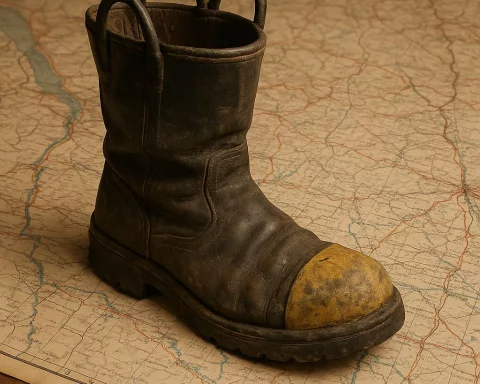In recent crackdowns on illegal trade in South Africa, police made significant arrests, showcasing their commitment to fighting crime. In Bishops Lavis, officers found a stash of illegal crayfish tails, leading to the capture of a 56-year-old man. Meanwhile, in Bellville, another raid uncovered over 34,000 mandrax tablets and crystal meth, resulting in the arrest of a 31-year-old foreign national. These operations highlight the ongoing struggle against organized crime and the dangers that law enforcement faces while working to keep communities safe.
What are the recent operations against illicit trade in South Africa?
Recent operations in South Africa resulted in significant arrests: a 56-year-old man was apprehended for possessing illegal crayfish tails in Bishops Lavis, and a 31-year-old foreign national was arrested in Bellville with 34,210 mandrax tablets and crystal meth, highlighting ongoing efforts against organized crime.
A Pre-Dawn Raid in Bishops Lavis
In the early hours of Wednesday, April 9, a meticulously planned operation took place in Charlesville, Bishops Lavis. Officers from the Anti-Economic Crime Task Team, supported by the Provincial Counterfeit and Illicit Goods Policing Team, arrested a man possessing crayfish tails, a high-value commodity on the black market. Lieutenant Colonel Malcolm Pojie stated that the squad had acted on intelligence suggesting drug-related activities at a specific location.
The officers’ mission commenced as they arrived at the targeted premises, extending their search to a white Toyota LDV parked nearby. Hidden under plastic wraps in the vehicle’s bed, they uncovered a significant stash of crayfish tails. This discovery led to the immediate apprehension of a 56-year-old man for the unlawful possession of these marine delicacies. The suspect now awaits his initial court appearance at the Bishop Lavis Magistrate’s Court.
Crayfish, revered as a culinary delight worldwide, often falls victim to illegal trade due to stringent harvesting regulations. The black market for crayfish tails thrives, particularly when legal routes are restricted by conservation efforts and quotas. It’s a bitter irony that creatures intended to sustain their populations often become ensnared by human greed.
The Bellville Drug Bust
This operation in Bishops Lavis was not an isolated event. Just a day earlier, on Tuesday, April 8, another critical bust unfolded. At around 6:45 am, officers launched a targeted raid on a block of flats in Bellville, again acting on precise intelligence. Their search yielded a significant haul: 34,210 mandrax tablets, one kilogram of crystal meth (referred to locally as tik), and an undisclosed sum of cash. These items were presumed to be proceeds from the illicit drug trade. This raid resulted in the arrest of a 31-year-old foreign national, facing serious charges of drug dealing.
These consecutive operations underscore the relentless efforts of law enforcement in combating organized crime. The illegal trade in marine life and narcotics highlights broader socio-economic challenges, including high demand, lucrative profits, and the participation of international networks.
Historically, the smuggling of marine life has deep roots. In the 19th century, rare species were often illegally transported to satisfy the burgeoning exotic food markets in Europe and North America. The romanticism of the Victorian era, combined with a fascination for the “exotic,” fueled much of this trade. Today, the demand persists, driven by both nostalgia and the modern culinary world’s insatiable appetite for rare delicacies.
The Evolution of the Global Drug Trade
Similarly, the global drug trade has evolved over decades. The 20th century saw the rise of drug cartels, whose influence permeated many societies. The mandrax tablets confiscated in the Bellville operation recall the 1970s when the drug first gained popularity in South Africa. Known colloquially as “white pipe,” mandrax became synonymous with addiction and crime in many townships.
These operations also highlight the arduous and often dangerous work undertaken by law enforcement officers. Acting on intelligence, these officers place themselves at considerable risk to curtail illegal activities. Each seizure and arrest represents a small victory in the broader battle against organized crime. While the dedication and bravery of these officers often go unnoticed, their efforts are crucial in maintaining a measure of safety and order in communities.
Artistic movements have also reflected societal concerns around these issues. The Dada movement of the early 20th century, with its absurdity and critique of the status quo, paralleled the chaos and moral ambiguity of its time. Contemporary art, similarly, grapples with themes of legality, morality, and human impact on nature – all echoed in today’s struggles against illegal trade.
Addressing the Root Causes
The intersection of historical patterns, socio-economic forces, and human psychology creates a complex web that law enforcement must navigate. The lucrative nature of illegal trades, whether in marine life or narcotics, ensures these activities persist despite stringent regulations and penalties. The stories of the crayfish tails and mandrax tablets are but chapters in an ongoing saga of crime and enforcement.
As society progresses, there is hope that through continued vigilance and evolving strategies, the tide will eventually turn in favor of legal and sustainable practices. The work of the Anti-Economic Crime Task Team and the Provincial Counterfeit and Illicit Goods Policing Team stands as a testament to the relentless pursuit of justice amidst the shadows of illicit commerce.
Communities affected by these operations often face multifaceted challenges. Economic disparities, social instability, and limited opportunities can push individuals towards illegal activities. Comprehensive solutions must address these root causes, fostering environments where legal livelihoods thrive, and illegal trades lose their allure.
Ultimately, these narratives – of crayfish tails and drugs – remind us of the interconnectedness of our world. They urge introspection and collective action, drawing from history, art, and societal values to forge a path toward a more just and equitable future. The pursuit of justice, much like art, requires both passion and precision, a blend of the idealistic and the pragmatic.
FAQ on Recent Crackdowns on Illicit Trades in South Africa
What recent operations have been conducted against illicit trade in South Africa?
Recent operations resulted in significant arrests: a 56-year-old man was apprehended in Bishops Lavis for possessing illegal crayfish tails, while a 31-year-old foreign national was arrested in Bellville with over 34,000 mandrax tablets and crystal meth. These events highlight ongoing efforts against organized crime.
What was discovered during the Bishops Lavis raid?
In a pre-dawn raid on April 9, officers found illegal crayfish tails hidden under plastic wraps in a vehicle parked near a targeted premises. The discovery led to the immediate arrest of a 56-year-old man for the unlawful possession of these marine delicacies, which are highly sought after on the black market.
What were the findings of the drug bust in Bellville?
On April 8, officers conducted a targeted raid in Bellville that uncovered 34,210 mandrax tablets, one kilogram of crystal meth (known locally as tik), and an undisclosed amount of cash. The operation resulted in the arrest of a 31-year-old foreign national who is facing serious drug-related charges.
Why is the illegal crayfish trade a concern?
The illegal crayfish trade is a significant issue due to stringent harvesting regulations aimed at conservation. These regulations create a black market where crayfish tails become a high-value commodity, often leading to overexploitation and threats to marine biodiversity.
How does the drug trade relate to historical patterns?
The global drug trade has evolved significantly, particularly with the rise of drug cartels in the 20th century. The mandrax tablets confiscated in Bellville resonate with the drug’s popularity in South Africa during the 1970s, symbolizing the ongoing challenges of addiction and organized crime in many communities.
What are some root causes of illegal trade and crime in communities?
Economic disparities, social instability, and limited opportunities often drive individuals toward illegal activities. Addressing these underlying issues is crucial for fostering environments where legal livelihoods can flourish and reducing the appeal of illicit trades. Comprehensive solutions must be developed to tackle these socio-economic challenges effectively.











